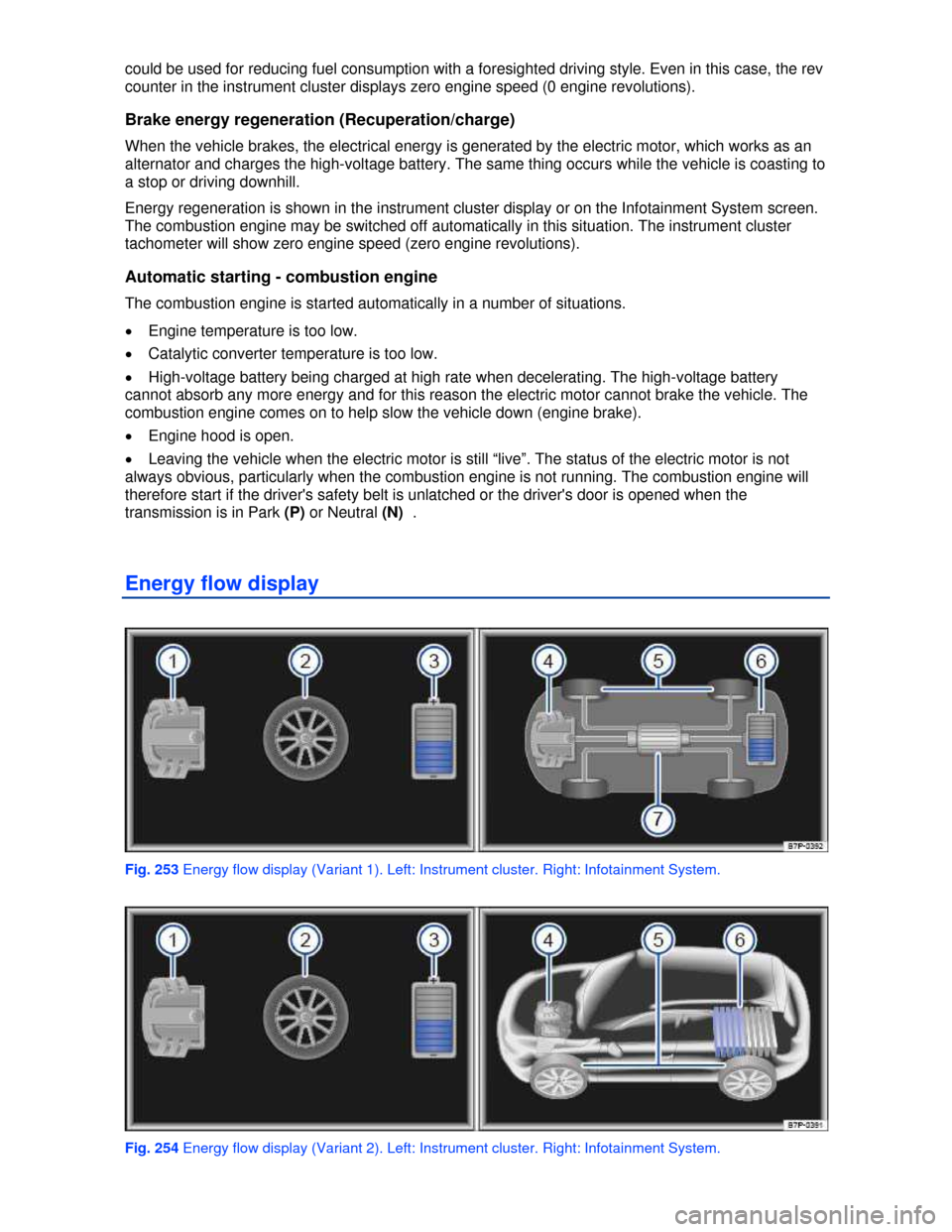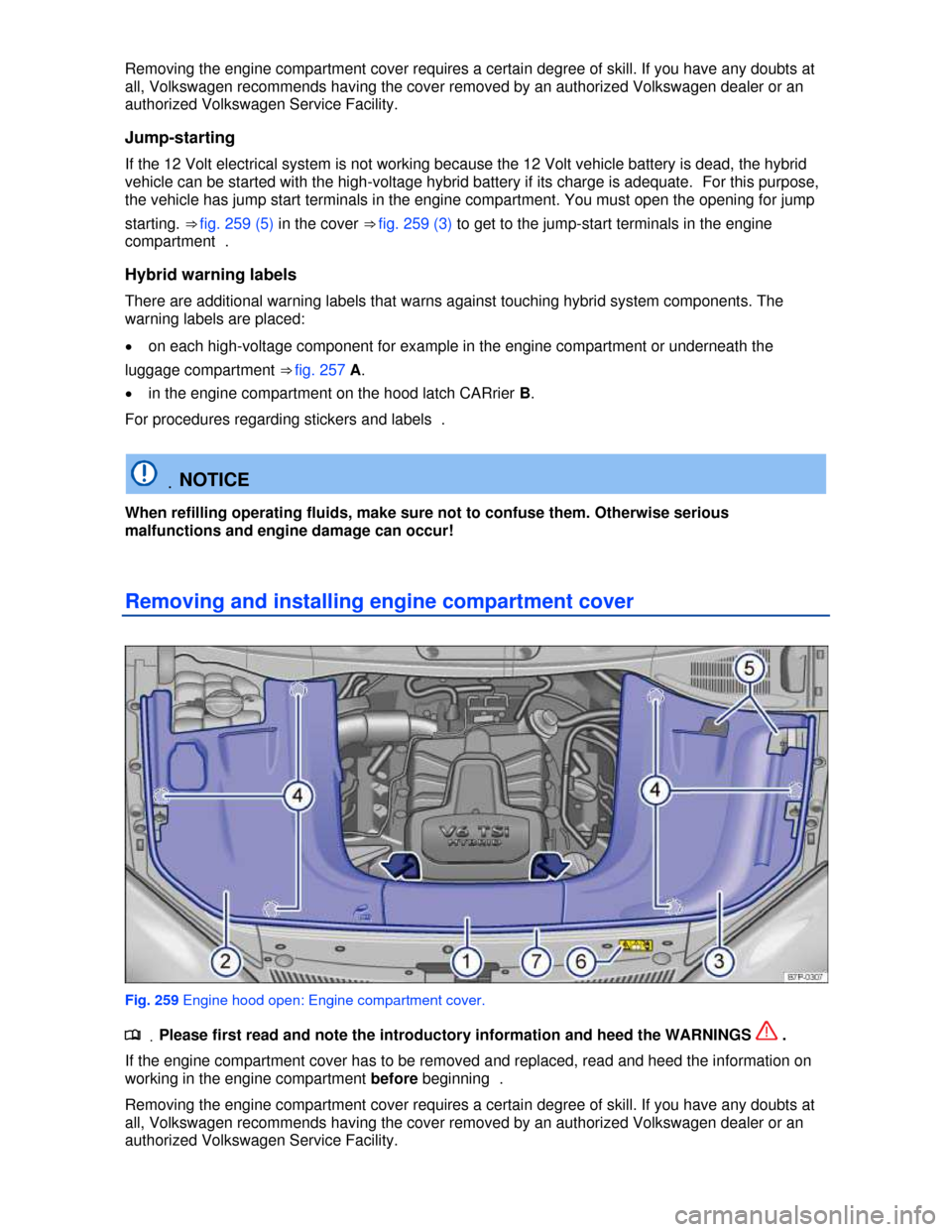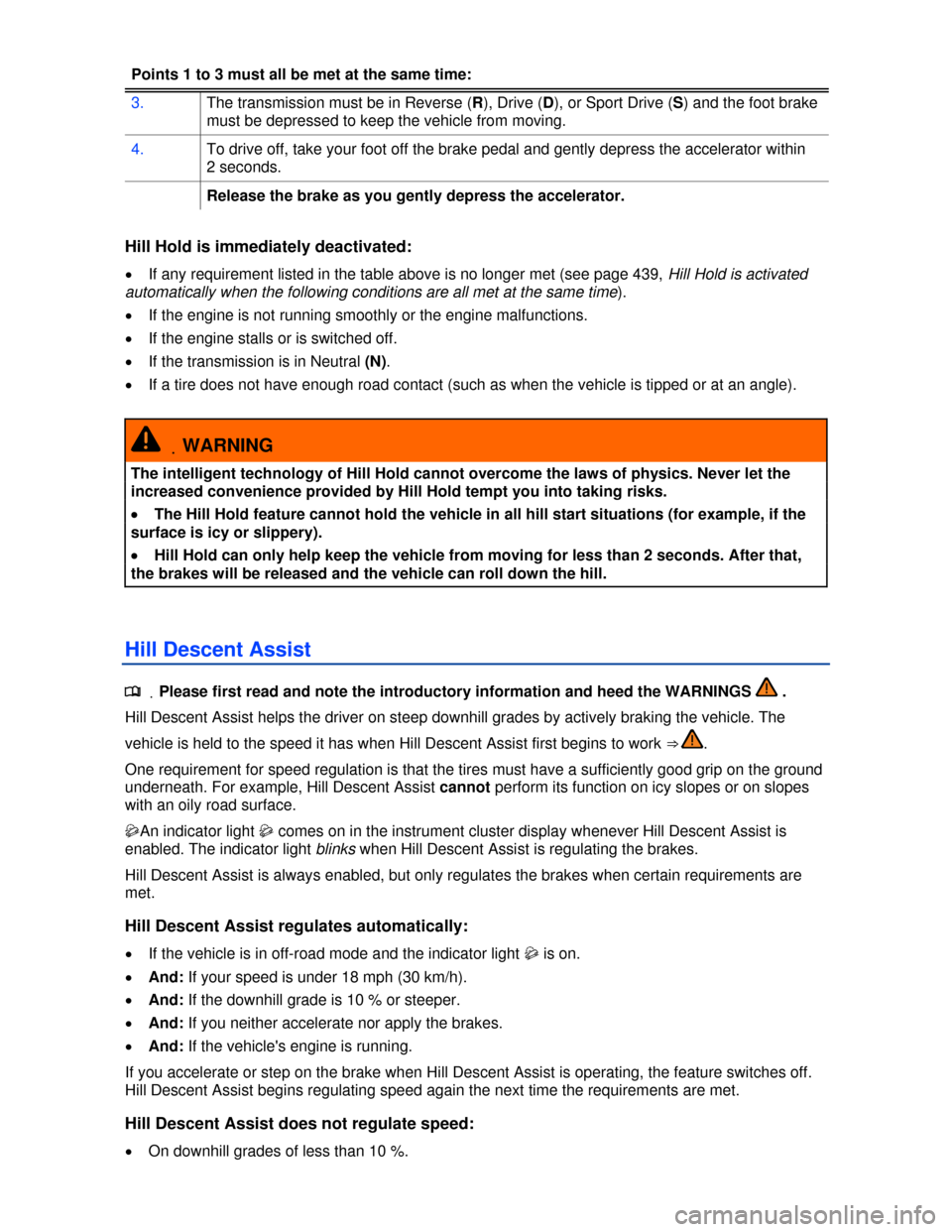Page 347 of 440

When driving forwards on loose surfaces, a special off-road ABS is automatically activated. In this
mode, the front wheels could lock briefly. This shortens the braking distance in off-road situations as
the wheels dig into loose surfaces. This occurs only when driving straight ahead. When the front
wheels are turned, the normal ABS is activated.
Brake Assist (BAS)
The Brake Assist System can help to reduce stopping distances. If you press the brake pedal very
quickly, BAS detects an emergency situation. It then very quickly builds up full brake system pressure,
maximizing braking power and reducing the stopping distance. This way, ABS can be activated more
quickly and efficiently.
Do not reduce pressure on the brake pedal! BAS switches off automatically as soon as you release or
let up on the brake.
Anti-Slip Regulation (ASR)
ASR reduces engine power directed to spinning wheels and adjusts power to the road conditions.
Even under poor road conditions, ASR can make it easier to get moving, accelerate, and climb hills.
ESC and ASR can help when driving on loose surfaces (such as gravel) and in deep snow. If you get
stuck in deep snow, you may be able to get going again by “rocking” the vehicle back and forth. ESC
and ASR recognize this special driving situation and automatically increase the speed of the front
wheels. Keep pressing the accelerator and let ESC increase the speed of the front wheels to help you
keep moving or get moving again.
ASR can be switched on or off manually .
Electronic Differential Lock (EDL)
EDL is applied during regular straight-line acceleration. EDL gently brakes a drive wheel that has lost
traction (spinning) and redirects the drive force to other drive wheels. In extreme cases, EDL
automatically switches off to keep the brake from overheating. As soon as the brake has cooled down,
EDL automatically switches on again.
XDL is an extension of the Electronic Differential Lock system. XDL does not react to drive wheel
slippage when driving straight ahead. Instead, XDL detects slippage of the inside front wheel during
fast cornering. XDL applies enough brake pressure to this wheel in order to stop the slippage. This
improves traction, which helps the vehicle stay on track.
.WARNING
Driving fast on icy, slippery, or wet roads can lead to a loss of control and result in serious
personal injury for you and your passengers.
�x Always adjust your speed and driving style to road, traffic, weather, and visibility
conditions. Never let the additional safety that ESC, ABS, BAS, ASR, and EDL can provide
tempt you into taking extra risks.
�x Braking assistance systems cannot overcome the laws of physics and always prevent
loss of vehicle control. Slippery and wet roads are still dangerous even with ESC and the
other systems!
�x Driving too fast on wet roads can cause the wheels to lose contact with the road and
“hydroplane.” A vehicle that has lost road contact cannot be braked, steered, or controlled.
�x These systems cannot reduce the risk of accident, for example if you drive too fast for
conditions or if you do not keep your distance from the vehicle in front of you.
�x Although these systems are very effective and can help you control the vehicle in many
difficult situations, always remember that your vehicle handling control is limited by tire
traction.
�x When accelerating on a slippery surface, for example on ice and snow, depress the
accelerator CARefully. Even with these systems, the wheels may start to spin, leading to a
loss of vehicle control.
Page 361 of 440
Warning lights and text messages are shown in the instrument cluster display. Acoustic warnings may
also sound at the same time.
Lights up Warnings in the instrument
cluster display Proper response
∋ Fault in the hybrid system: stop
the vehicle at a safe location!
Stop the vehicle in a safe place as soon as it is safe
to do so.
∋
Fault Hybrid system: Workshop! See an authorized Volkswagen dealer or an
authorized Volkswagen Service Facility.
High-voltage battery is being
charged.
While this message appears, do not stop the engine.
�2�%�!�$�9 READY.
Never leave the vehicle parked in the ready position.
Remove the remote control vehicle key out of the
ignition or for vehicle with Keyless Access press the
starter button When leaving the vehicle always take
the remote control vehicle key with you.
�%�
Page 366 of 440

could be used for reducing fuel consumption with a foresighted driving style. Even in this case, the rev
counter in the instrument cluster displays zero engine speed (0 engine revolutions).
Brake energy regeneration (Recuperation/charge)
When the vehicle brakes, the electrical energy is generated by the electric motor, which works as an
alternator and charges the high-voltage battery. The same thing occurs while the vehicle is coasting to
a stop or driving downhill.
Energy regeneration is shown in the instrument cluster display or on the Infotainment System screen.
The combustion engine may be switched off automatically in this situation. The instrument cluster
tachometer will show zero engine speed (zero engine revolutions).
Automatic starting - combustion engine
The combustion engine is started automatically in a number of situations.
�x Engine temperature is too low.
�x Catalytic converter temperature is too low.
�x High-voltage battery being charged at high rate when decelerating. The high-voltage battery
cannot absorb any more energy and for this reason the electric motor cannot brake the vehicle. The
combustion engine comes on to help slow the vehicle down (engine brake).
�x Engine hood is open.
�x Leaving the vehicle when the electric motor is still “live”. The status of the electric motor is not
always obvious, particularly when the combustion engine is not running. The combustion engine will
therefore start if the driver's safety belt is unlatched or the driver's door is opened when the
transmission is in Park (P) or Neutral (N) .
Energy flow display
Fig. 253 Energy flow display (Variant 1). Left: Instrument cluster. Right: Infotainment System.
Fig. 254 Energy flow display (Variant 2). Left: Instrument cluster. Right: Infotainment System.
Page 369 of 440
.NOTICE
If the vehicle is not used for a longer period, the high-voltage battery will run down. To keep
the high-voltage battery in good condition, the vehicle needs to be driven at least every 2
months for at least 30 minutes or 15 miles (20 km).
�x If the high-voltage battery is dead, the gasoline engine will not start. Contact an authorized
Volkswagen dealer, an authorized Volkswagen Service Facility, or another qualified workshop
for assistance.
Special considerations for hybrid vehicles
Fig. 257 Warning label on high-voltage hybrid components (A). Warning label on covers which are over high-
voltage hybrid components (B).
Fig. 258 In the engine compartment: Coolant expansion tank, low temperature cooling circuit.
.�
Page 370 of 440

Removing the engine compartment cover requires a certain degree of skill. If you have any doubts at
all, Volkswagen recommends having the cover removed by an authorized Volkswagen dealer or an
authorized Volkswagen Service Facility.
Jump-starting
If the 12 Volt electrical system is not working because the 12 Volt vehicle battery is dead, the hybrid
vehicle can be started with the high-voltage hybrid battery if its charge is adequate. For this purpose,
the vehicle has jump start terminals in the engine compartment. You must open the opening for jump
starting. ⇒ fig. 259 (5) in the cover ⇒ fig. 259 (3) to get to the jump-start terminals in the engine
compartment .
Hybrid warning labels
There are additional warning labels that warns against touching hybrid system components. The
warning labels are placed:
�x on each high-voltage component for example in the engine compartment or underneath the
luggage compartment ⇒ fig. 257 A.
�x in the engine compartment on the hood latch CARrier B.
For procedures regarding stickers and labels .
.NOTICE
When refilling operating fluids, make sure not to confuse them. Otherwise serious
malfunctions and engine damage can occur!
Removing and installing engine compartment cover
Fig. 259 Engine hood open: Engine compartment cover.
.�
Page 371 of 440
Explanation of fig. 259:
(1) Center cover.
(2) Right cover.
(3) Left cover.
(4) Retainers.
(5) Opening for jump starting.
(6) Warning label for high-voltage hybrid components.
(7) Engine compartment seal.
Engine compartment covers (1) and (3) must be removed in the following situations:
�x Changing light bulbs in the left headlight assembly.
Engine compartment covers (1) and (2) must be removed in the following situations:
�x Changing light bulbs in the right headlight assembly.
�x Adding engine coolant to the low temperature coolant circuit .
Removing engine compartment cover
When removing any part of the engine compartment cover, always pull CARefully on the relevant
attachment points ⇒ .
�x Open the engine hood �
Page 372 of 440
Starting assistance systems
�
Page 374 of 440

Points 1 to 3 must all be met at the same time:
3. The transmission must be in Reverse (R), Drive (D), or Sport Drive (S) and the foot brake
must be depressed to keep the vehicle from moving.
4. To drive off, take your foot off the brake pedal and gently depress the accelerator within
2 seconds.
Release the brake as you gently depress the accelerator.
Hill Hold is immediately deactivated:
�x If any requirement listed in the table above is no longer met (see page 439, Hill Hold is activated
automatically when the following conditions are all met at the same time).
�x If the engine is not running smoothly or the engine malfunctions.
�x If the engine stalls or is switched off.
�x If the transmission is in Neutral (N).
�x If a tire does not have enough road contact (such as when the vehicle is tipped or at an angle).
.WARNING
The intelligent technology of Hill Hold cannot overcome the laws of physics. Never let the
increased convenience provided by Hill Hold tempt you into taking risks.
�x The Hill Hold feature cannot hold the vehicle in all hill start situations (for example, if the
surface is icy or slippery).
�x Hill Hold can only help keep the vehicle from moving for less than 2 seconds. After that,
the brakes will be released and the vehicle can roll down the hill.
Hill Descent Assist
.�